Well, I am trying to analyze the following circuit:

simulate this circuit – Schematic created using CircuitLab
When I use and apply KCL, I can write the following set of equations:
$$ \begin{cases} \text{I}_1+\text{I}_4=\text{I}_2+\text{I}_3\\ \\ \text{I}_1=\text{I}_2\\ \\ \text{I}_3+\text{I}_5=0\\ \\ \text{I}_6=\text{I}_4+\text{I}_5 \end{cases}\tag1 $$
When I use and apply Ohm's law, I can write the following set of equations:
$$ \begin{cases} \text{I}_1=\frac{\text{V}_\text{x}-\text{V}_1}{\text{R}_1}\\ \\ \text{I}_2=\frac{\text{V}_1}{\text{R}_2}\\ \\ \text{I}_3=\frac{\text{V}_1-\text{V}_2}{\text{R}_3}\\ \\ \text{I}_4=\frac{\text{V}_3-\text{V}_1}{\text{R}_4}\\ \\ \text{I}_5=\frac{\text{V}_3-\text{V}_2}{\text{R}_5} \end{cases}\tag2 $$
Substitute \$(2)\$ into \$(1)\$, in order to get:
$$ \begin{cases} \frac{\text{V}_\text{x}-\text{V}_1}{\text{R}_1}+\frac{\text{V}_3-\text{V}_1}{\text{R}_4}=\frac{\text{V}_1}{\text{R}_2}+\frac{\text{V}_1-\text{V}_2}{\text{R}_3}\\ \\ \frac{\text{V}_\text{x}-\text{V}_1}{\text{R}_1}=\frac{\text{V}_1}{\text{R}_2}\\ \\ \frac{\text{V}_1-\text{V}_2}{\text{R}_3}+\frac{\text{V}_3-\text{V}_2}{\text{R}_5}=0\\ \\ \text{I}_6=\frac{\text{V}_3-\text{V}_1}{\text{R}_4}+\frac{\text{V}_3-\text{V}_2}{\text{R}_5} \end{cases}\tag3 $$
Now, I have an ideal opamp, so I know that \$\text{V}_+=\text{V}_-=\text{V}_2=0\$. So I can rewrite equation \$(3)\$ as follows:
$$ \begin{cases} \frac{\text{V}_\text{x}-\text{V}_1}{\text{R}_1}+\frac{\text{V}_3-\text{V}_1}{\text{R}_4}=\frac{\text{V}_1}{\text{R}_2}+\frac{\text{V}_1}{\text{R}_3}\\ \\ \frac{\text{V}_\text{x}-\text{V}_1}{\text{R}_1}=\frac{\text{V}_1}{\text{R}_2}\\ \\ \frac{\text{V}_1}{\text{R}_3}+\frac{\text{V}_3}{\text{R}_5}=0\\ \\ \text{I}_6=\frac{\text{V}_3-\text{V}_1}{\text{R}_4}+\frac{\text{V}_3}{\text{R}_5} \end{cases}\tag4 $$
But this system contains a contradiction so it is impossible to solve. Where is my mistake?
